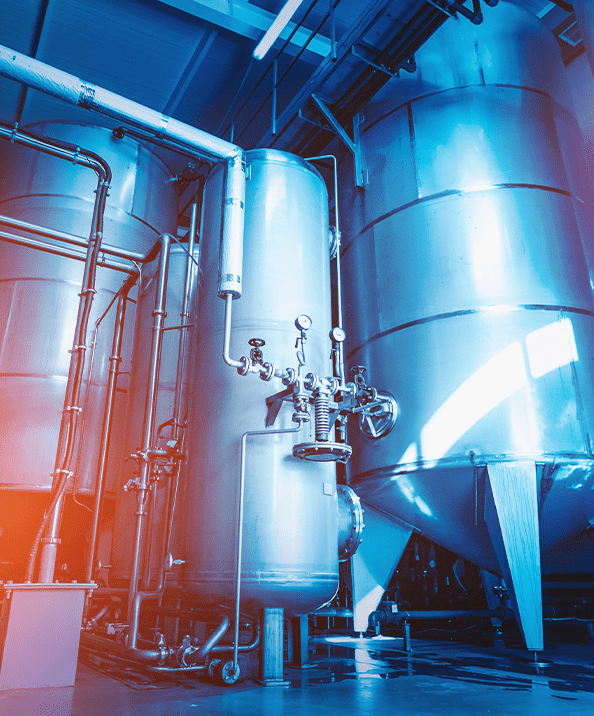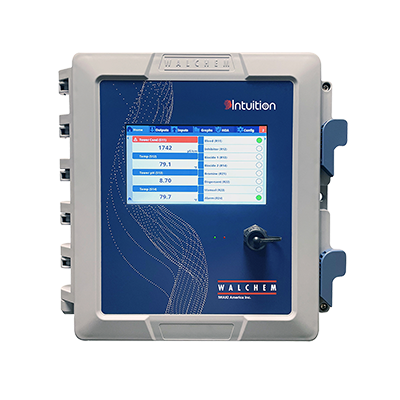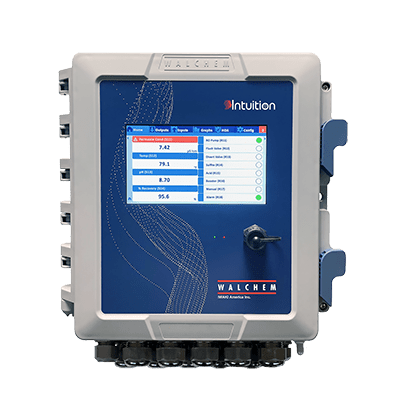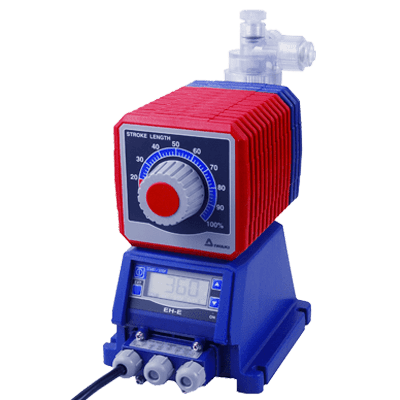
Intuition-9
Water Disinfection in Hospitals
Walchem products are used to provide protection against Legionella and other water-borne diseases.
Customer | WTC for Disinfection Applications
PROBLEM
Control chlorine dioxide addition in both the hot and cold potable water loop systems for enhanced protection against Legionella and other water-borne diseases.
SOLUTION
Two separate systems have been installed in one hospital. The first is for a hot water system that is specific to the cancer center in the hospital. A Chlorine dioxide generator produces a concentrated chlorine dioxide solution. Walchem EHE pumps, controlled by the Walchem INT-9 controller, adjust the pump outputs for the chlorine dioxide feed into the system. There are currently three sensors on the system: ClO2, ORP and pH. The ORP and pH sensors are better able to handle the temperature of the hot water system. They are on the outbound part of the hot water loop, and activate the addition of the ClO2 feed, maintaining a set point of ap proximately 325 mV. The Chlorine Dioxide sensor is on the return part of the system. A sample of water is taken, and cooled, prior to measurement by the sensor. This sensor provides enhanced protection, and shutdown capability if the system exceeds 0.6 ppm of ClO2 in the water. The fourth sensor input is planned for future measurement of ORP for ClO2 in a
cold-water loop.
The second system is in the main part of the hospital, with four sensors for four water loops. Two Chlorine Dioxide sensors for cold-water loops, and two ORP sensors for two hot water loops. Again, the INT-9 controller activates the EHE pump to add the Chlorine Dioxide as needed to maintain set point.The INT-9 controller also has discrete inputs (digital inputs) from the alarm output of the chlorine dioxide generator. This enables the INT-9 controller to provide communication of any alarms that might occur on the generator itself, in addition to the standard alarms. A future enhancement for both systems will be to add a Chlorine Dioxide gas analyzer, and input this to the INT-9 on an analog input for datalogging and alarm capabilities.
The customer is a water doctor who initially provided water treatment for the Cooling Tower and Boilers in the hospital. INT-9 controllers have given the hospital the security that the systems maintain control and communicate when there is a problem. The INT-9 controller was a natural expansion for both the water doctor and the hospital to maintain control of the new chemical processes. All controllers communicate over the hospital network with their on-board Ethernet TCP/IP communication.
CONCLUSION: Significant Improvement
The operators at the hospital appreciate the documentation of system operation provided by the INT-9 controller, and the peace of mind knowing that operation is normal unless they’ve received an alarm notification.




